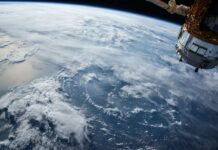There is a good chance that if you wandered into the deep woods or travelled out to an ocean, you would not be able to access the Internet or make calls without a satellite communicator. It is primarily due to the lack of cell towers in the area that cellular signals are not available in places like the forest or the ocean.
A technological breakthrough has finally enabled humans to provide cell service in remote areas previously unreachable by traditional cell signals in 2022.
US telecommunications company, T-Mobile, introduced Starlink V2 today, the satellites that can directly transmit cell signals to mobile phones and Tesla cars from space.
T-Mobile and Starlink V2 were the main topics of today’s announcement. The new plan, dubbed Coverage Above and Beyond, will utilize T-Mobile’s mid-band spectrum across the country to build a new network.
A major advantage of using an existing spectrum is that most smartphones will be able to connect to the new network without requiring any new equipment.
The new network uses SpaceX’s Starlink V2 satellites to eliminate cellular dead zones across the country. The newly created network aims to provide cell phone connectivity everywhere, from Death Valley to the Great Smoky Mountains.
According to Elon Musk, Chief Engineer of SpaceX, the deployment of Starlink V2 satellites will work great for texting and voice calls, but not for high-bandwidth applications. Under the new network, each cell zone can only deliver 2 to 4Mbps.
Despite SpaceX’s Starlink V2 technology only currently being implemented in the USA, both SpaceX and T-Mobile have expressed a desire to expand coverage worldwide, inviting all telecom carriers to join forces. The SpaceX CEO, Elon Musk, posted a tweet in hopes of eliminating cellular dead zones once and for all.






